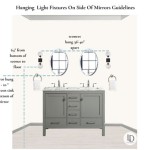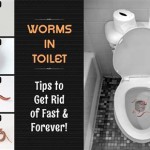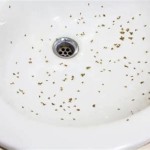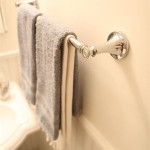Understanding Moen Bathroom Sink Drain Parts
Moen is a widely recognized brand in the plumbing industry, known for its durable and aesthetically pleasing bathroom fixtures. The bathroom sink drain, while often overlooked, is a critical component of any sink system. Understanding the various Moen bathroom sink drain parts, their function, and potential maintenance issues is essential for both homeowners and plumbing professionals.
This article provides a comprehensive overview of the key components that constitute a Moen bathroom sink drain. It will detail each part, explain its purpose within the overall drainage system, and highlight common issues that might arise, necessitating repair or replacement. Further, it will touch upon the subtle variations in drain types offered by Moen and the implications for part compatibility.
The Pop-Up Drain Assembly
The pop-up drain is arguably the most common type of drain assembly found in modern bathroom sinks, and Moen offers several variations. It is characterized by a stopper that can be raised and lowered via a lever, allowing for easy filling and draining of the sink. The assembly consists of multiple parts working in concert to achieve this functionality.
The primary components of a Moen pop-up drain assembly are the drain flange, the drain body, the lift rod, the pivot rod, the stopper, and the connecting strap. Each part plays a crucial role in the operation of the drain mechanism.
The drain flange is the visible, often chrome-plated, part that sits inside the sink basin itself. It forms the upper lip of the drain opening and provides a seal against the sink. It typically includes a rubber or silicone gasket underneath it to prevent water leakage between the flange and the sink's surface. Moen offers drain flanges in various finishes to match different faucet styles. Proper installation of the flange, including ensuring the gasket is correctly seated, is vital to prevent leaks around the sink drain.
The drain body (also called the tailpiece) is the cylindrical part that attaches to the underside of the drain flange, extending downward into the plumbing. It is usually made of brass or plastic and has threads to connect to the flange and the P-trap. The drain body also houses the pivot rod opening, an essential design feature for the pop-up mechanism. The quality of the drain body material is crucial for longevity and resistance to corrosion.
The lift rod is the vertical rod that extends upwards behind the faucet. This is the handle that the user operates to raise and lower the stopper. The lift rod is connected to the pivot rod via a connecting strap. Moen often provides detailed instructions on how to adjust the lift rod to achieve the correct stopper height.
The pivot rod is a horizontal rod that inserts into the drain body. One end of the pivot rod connects to the lift rod's connecting strap, and the other end is connected to the stopper. When the lift rod is raised or lowered, the pivot rod rotates, causing the stopper to move up or down. The pivot rod is typically made of metal or plastic and has a rubber or silicone seal around it to prevent water leakage from the drain body. This seal is a common point of failure, leading to slow leaks under the sink.
The stopper is the component that physically blocks the drain opening. Moen stoppers are typically made of metal or plastic, sometimes with a rubber or silicone seal around the edge. Over time, stoppers can accumulate hair and debris, hindering their ability to seal properly. Regular cleaning and maintenance are necessary to ensure the stopper functions effectively.
The connecting strap (also called the clevis) is a piece of metal or plastic that connects the lift rod to the pivot rod. It typically has multiple holes, allowing for adjustment of the stopper's height. Proper adjustment of the connecting strap is essential for ensuring the stopper seals correctly and doesn't bind or get stuck.
The Grid Drain Assembly
An alternative to the pop-up drain is the grid drain. Instead of a stopper that seals the drain completely, a grid drain utilizes a fixed grid or strainer that prevents large objects from entering the drainpipe. This design is commonly found in vessel sinks or in commercial settings where overflow prevention is less of a concern. Moen offers grid drain options in various styles and finishes.
The primary components of a Moen grid drain assembly are the drain flange (often larger and more decorative than the pop-up flange), the drain body, the grid strainer, and the mounting hardware.
The drain flange in a grid drain system plays a similar role to the pop-up drain flange: it forms the visible upper lip of the drain opening and provides a seal against the sink. However, grid drain flanges are often designed to be more aesthetically prominent, as they are always visible. Moen offers these flanges in a range of styles and finishes to complement various sink designs.
The drain body of a grid drain is simpler than that of a pop-up drain because it doesn't need to accommodate a pivot rod mechanism. Its main functions are to connect to the drain flange and the P-trap. Material quality and proper sealing are still critical for preventing leaks. The drain body may feature threads or a compression fitting for connecting to the P-trap.
The grid strainer is the key component of the grid drain. It is a fixed, perforated or slotted piece that sits inside the drain flange, preventing debris from entering the drainpipe. The grid strainer is usually removable for cleaning. The design of the grid strainer can vary, with some featuring finer meshes for improved filtration. Moen grid strainers are typically made of metal to ensure durability.
The mounting hardware for a grid drain includes nuts, washers, and gaskets to secure the drain flange and drain body to the sink. Proper tightening of the mounting hardware is essential for creating a watertight seal. Overtightening, however, can damage the sink or the drain components.
P-Trap and Tailpiece Extension
While not strictly part of the sink drain assembly itself, the P-trap and tailpiece extension are essential components of the overall bathroom sink drainage system and connect directly to the Moen drain. These parts ensure that sewer gases do not enter the bathroom and allow for proper drainage of wastewater.
The P-trap is a U-shaped pipe that holds a small amount of water, creating a seal that prevents sewer gases from flowing back up into the bathroom. It is typically made of PVC or metal and is connected to the drain tailpiece and the drainpipe that leads to the main plumbing system. The P-trap also traps heavier debris that may have passed through the drain strainer, preventing clogs further down the line.
The tailpiece extension is a length of pipe that connects the drain body to the P-trap. It is used to adjust the height of the P-trap to align with the drain body. Tailpiece extensions are available in various lengths and materials. In situations where the drain outlet is lower than the P-trap inlet, a tailpiece extension is necessary to properly connect the drainage system. Moen does not directly manufacture tailpiece extensions or P-traps, but these components are readily available from plumbing supply stores and are universally compatible.
Materials and Finishes
Moen uses a variety of materials in its bathroom sink drain parts, each with its own advantages and disadvantages. Common materials include brass, stainless steel, and plastic (typically polypropylene or ABS).
Brass is a durable and corrosion-resistant metal that is widely used in plumbing fixtures. Moen often uses brass for drain bodies and flanges due to its strength and longevity. Brass components are generally more expensive than plastic components, but they offer superior durability.
Stainless steel is another corrosion-resistant metal that is sometimes used in drain flanges and stoppers. Stainless steel is known for its sleek appearance and resistance to staining. While durable, stainless steel can be more susceptible to scratches than brass.
Plastic is a lightweight and inexpensive material that is often used for drain bodies, pivot rods, and connecting straps. Moen uses high-quality plastics that are resistant to chemicals and temperature changes. While plastic is less durable than metal, it is a cost-effective option for many applications.
Moen offers its bathroom sink drain parts in a variety of finishes to match its faucet styles. Common finishes include chrome, brushed nickel, oil-rubbed bronze, and matte black. The finish is typically applied to the drain flange and stopper, providing a consistent aesthetic throughout the bathroom. The choice of finish is largely a matter of personal preference, but it is important to consider the overall style of the bathroom and the existing fixtures.
Common Issues and Maintenance
Like any plumbing component, Moen bathroom sink drain parts are susceptible to wear and tear over time. Common issues include leaks, clogs, and corrosion.
Leaks are a common problem with pop-up drains, particularly around the pivot rod seal and the drain flange. Leaks around the pivot rod seal can often be resolved by replacing the rubber or silicone seal. Leaks around the drain flange may require tightening the mounting hardware or replacing the gasket under the flange. It's crucial to identify the source of the leak before attempting any repairs.
Clogs can occur in any type of sink drain, but they are more common in pop-up drains due to the presence of the stopper, which can trap hair and debris. Regular cleaning of the stopper and drainpipe is essential for preventing clogs. A simple tool, such as a bent wire hanger or a specialized drain cleaning tool, can be used to remove hair and debris from the drain.
Corrosion can occur in metal drain parts, particularly in areas with hard water. Over time, corrosion can weaken the drain parts and lead to leaks or failures. Regular cleaning and maintenance can help prevent corrosion. If corrosion is severe, it may be necessary to replace the affected parts.
Regular maintenance of Moen bathroom sink drain parts is essential for ensuring their longevity and proper function. This includes cleaning the stopper and drainpipe regularly, checking for leaks, and replacing worn or damaged parts as needed. Following Moen's recommended maintenance procedures can help prevent costly repairs in the future. When replacing parts, it is always recommended to use genuine Moen replacement parts to ensure compatibility and optimal performance.

Lavatory Drains Moen Solutions

Moen Lavatory Drain Assembly 96497 The Home Depot

Moen Lavatory Drain Assembly 96497 The Home Depot

Moen Lavatory Drain Assembly In The Sink Repair Parts Department At Com

Bathroom Faucet Drains 50 96497 Moen Solutions

Moen Lavatory Pop Up Drain Assembly Without Overflow In Chrome 140780 The Home Depot

Moen Part 12689 Pivot Rod And Ball For 50 Bathroom Drain Assembly Pop Up Drains Parts Home Depot Pro

Moen Replacement Drain Oil Rubbed Broe Bathroom Sink Stopper In The Drains Stoppers Department At Com

Moen Widespread Bathroom Faucet Rough In Valve With Drain Assembly 1 2 Ips Connection 9000 The Home Depot

Moen 50 Lavatory Drain Assembly Carded 96107 The Home Depot
Related Posts







